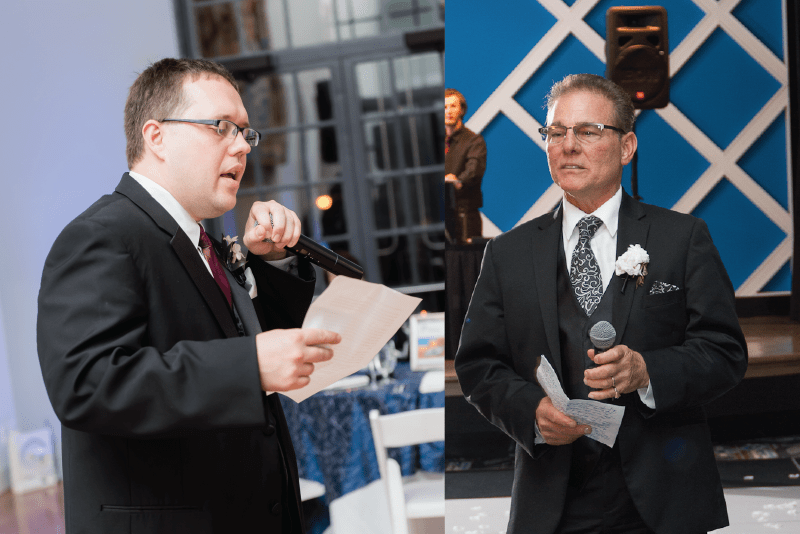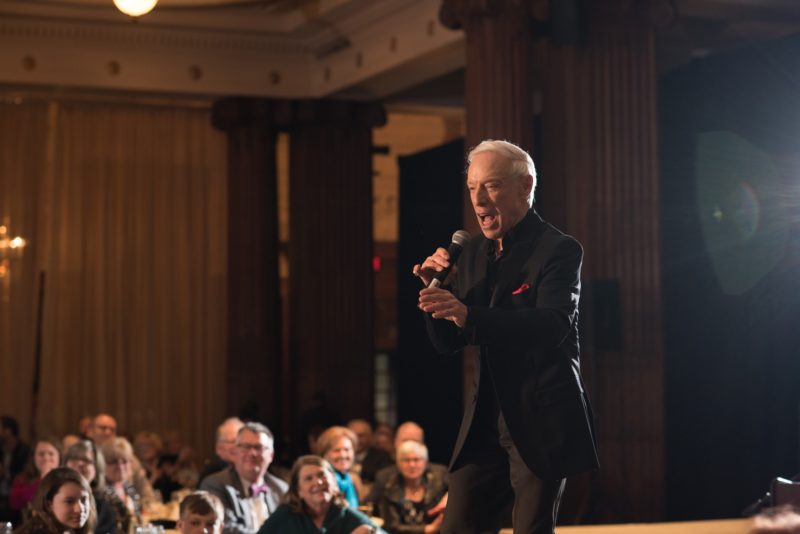We’ve all been there… the dreaded but not-optional public speech. Whether speaking in front of a group of 5 or 500, many people experience anxiety, stress, and perhaps fear before and during the presentation, and even occasionally after the speech has concluded. With our experience in the event industry, with both professional public speakers and individuals with other professional backgrounds, we’ve comprised several tips and tricks to help reduce or eliminate the aforementioned intimidating feelings.
We have divided our list of best practices into sections, encompassing tips based on the perspectives of various stakeholders in the event: the speaker, the audience, and the audio/visual professional who is helping deliver the message. Following the tips below will undoubtedly result in a more comfortable experience for the speaker, and will improve the experience and message retention for those in attendance.
Body Language Tips
- Always maintain a vertical, straight posture, with your shoulders back and your chest protruding slightly outward. This will allow you to speak from your diaphragm instead of your lungs. Speaking from your diaphragm prevents your lungs from expelling air in powerful gusts (plosives), and allows you to present your message with greater control, confidence, and consistency.
- Immediately before speaking, take 3 deep breaths to exhale the CO2 from your body. This will allow for improved airflow throughout your lungs, and will help to prevent hiccups during the presentation.
- Keep your eyes on the audience, and avoid looking at your presentation as much as possible.
- Smile when you speak. People can hear a more positive tone in your voice when you smile, creating a more comfortable environment and boosting your own confidence.
Speaking Tips
- Use notecards with bullet points instead of a full script. This promotes eye contact, but also allows you to speak with more fluidity and realism since you won’t be reading your speech word-for-word.
- Speak slowly and intentionally, and pronounce each word clearly.
- Do not fill dead air with “um” or “uh,” instead, simply embrace the moment of silence and use it to gather your thoughts to move to the next point. The audience will not notice the brief pause, but they will notice excessive “ums” or “uhs.”
- Do not alter your natural pitch, tone, or delivery. Use your natural speaking voice and mimic a personal, one-on-one conversation. Avoid the excited radio DJ voice.
Tips from the Audio/Visual Professional
- For handheld microphones, be sure to hold it in your hand at the center of your body, speaking directly into the microphone. Never cup the windscreen or microphone surface, and maintain a distance of between 3-6″ from your mouth to the microphone. Do not hold the microphone below your mouth, such as at waist or hip level.
- Lavalier or lapel microphones are generally positioned one fist-width below the speaker’s chin to minimize environmental interference while promoting vocal clarity.
- For podium microphones, maintaining a 3-6″distance between your mouth and the microphone’s surface will reduce plosives while collecting nearly all of your vocal projections.
- Never stand directly in front of a loudspeaker with a microphone, or you and your audience will be greeted with the deafening high pitched noise of feedback. A good rule-of-thumb is: if you can hear the direct sound of the loudspeaker where you are standing, you are not in an optimal location for using a microphone. Reposition yourself to reduce the chance of microphone feedback.
- Audio/sound technicians are trained to control every aspect of the audio in the room, including volume levels of the loudspeakers, the gain level on the microphones, and equalizer adjustments to reduce feedback caused by the environment. He or she will power the microphones on and off at the appropriate times, and may power lock the microphone so the user cannot accidentally disable the sound during the speech. Our trained professionals know to disable the microphones in situations where the speaker’s voice should not be projected to the audience, such as during private conversations, while eating or drinking, or during a restroom break.

Avoid making these common mistakes: covering parts of the microphone’s surface, and holding it beneath your mouth. Left: Leah Judway Photography. Right: Michael’s Photography.

These individuals are demonstrating proper technique with regards to positioning and handling of the microphone.

 August 25, 2017
August 25, 2017  Synergetic
Synergetic  Audio
Audio  September 30, 2025
September 30, 2025  Synergetic
Synergetic  About Us
About Us